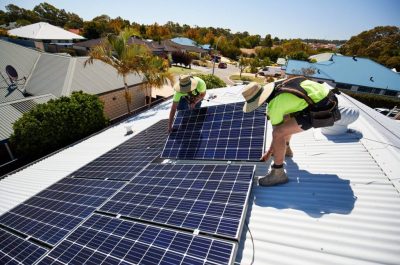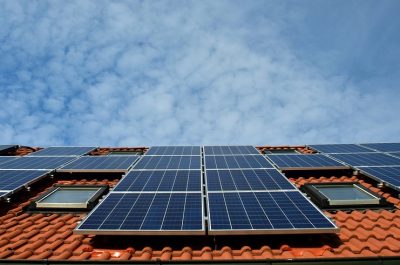Winning hearts and minds to deliver the renewable energy transition
Blessed with an abundance of wind and sunshine, Australia’s renewable resources are critical to efforts to decarbonise our energy system and ultimately our economy. With this natural wealth, we are well placed to forge our way towards a net zero carbon future by 2050.
While many Australians want renewables, we have not sufficiently advanced the conversation as a community about how we get these new sources of clean energy to where it is needed – or how the infrastructure is paid for.
Just over 80 per cent of Australians live on the east coast of Australia and even more within our coastal capital cities. Most of our solar farms have been built in inland regional areas and wind farms on/in regional coastal areas.
And herein lies the problem.
How do we get the power from where it’s generated to where it’s needed?
Energy generated in these wind and solar farms needs to be transported to customers along new and advanced transmission infrastructure. Unfortunately, there is consternation in affected communities about plans, routes, amenity and compensation. In some states, there have been no new transmission projects for a generation or more.
Acknowledging that this tension between affected landowners and communities and the anticipated proliferation of new transmission lines is not going away, how can all parties work together to secure the best outcome for all? For any progress to be made, the following intertwined concerns must be addressed:
- Improve landholder and community understanding of what to expect in engagement with energy businesses relating to energy infrastructure.
- Raise awareness of the energy sector’s efforts to respond to landholder concerns, including issues of social licence to operate, shared value and equitable compensation models.
The energy industry and related community sector has been working to resolve these issues and build genuine stakeholder engagement processes into projects.
In 2018 the Clean Energy Council released Community Engagement Guidelines for building powerlines for renewable energy developments focused on renewable developers.
In August 2021 RE-Alliance launched a report ‘Building Trust for Transmission: Earning the social licence needed to plug in Australia’s Renewable Energy Zones’. The report made 11 recommendations on how to improve the social licence for transmission infrastructure in Australia.
Just last week the Energy Charter launched the Energy Charter Better Practice Guide for Landholders and Communities to encourage better practice for energy businesses. This is the outcome of intensive work led by the Energy Charter with charter signatories (Powerlink Queensland, TransGrid, APA, Essential Energy, Energy QLD and Jemena) and farming and agricultural organisations (National Farmers Federation, Queensland Farmers Federation, NSW Farmers, AgForce QLD, Victorian Farmers Federation and Cotton Australia).
Then there’s the sticky issue of compensation, which is constrained by the current regulatory environment.
Under current arrangements the land on which the transmission towers are built is compulsorily acquired or leased with one-off payments. The regulatory framework provides for what it considers to be fair compensation. Anything above this adds to project costs and would have to be justified to the Australian Energy Regulator – which does not have a lot of scope within its Regulatory Investment Test for Transmission (RIT-T) process to do this. Its objective is to keep costs low as new transmission is paid for by all customers because benefits are shared.
If we cast our minds back just a decade or so ago, there was similar community opposition to wind farms. In response the wind industry developed several new compensation models, including ongoing annual payments for the affected landholder and sometimes also for affected neighbours.
Renewable generation is a competitive industry. Without gaining acceptance to build the wind turbines and connection assets to link to the transmission network, the project doesn’t get off the ground. Some of these new renewable projects are also supported by government policies to provide the investors with confidence to build.
These developments have occurred at a time when the public has lost faith in institutions. The advent of social media has made it easy to mobilise activists and stakeholders. So, community engagement and compensation expectations have risen but when it comes to transmission developments, the regulatory process for determining investment costs (which includes easement payments) has not changed. Some are calling for this process be expanded to offer benefits that may include boosting local economies or delivering rural employment opportunities.
Landholders may not be aware of (or care about) the difference between regulated networks building transmission lines and commercial businesses erecting wind turbines. To them it’s a new structure on their property and they want (what they perceive to be) fair compensation.
On 19 August 2021 the Australian Energy Market Commission (AEMC) released a ‘Transmission Planning and Investment Review Consultation Paper’. Re-Alliance and other stakeholders, including networks, are concerned that it does not include ‘social licence’ issues. If ignored this could derail projects if aggrieved stakeholders become sufficiently vocal and politicised.
Re-Alliance has said it is seeking to clarify with the AEMC and AER whether community benefit sharing can be funded under the current National Electricity Law (NEL) and National Electricity Rules (NER) including the RIT-T. The Australian Energy Infrastructure Commissioner (formerly the Wind Commissioner) is undertaking work on this matter.
There is no transition to a renewable energy future without transmission. However, we need to get the social licence settings right. All customers, including the vulnerable, pay for transmission developments, so a balanced approach to community benefit and compensation issues is vital to ensure we can get on and build this essential infrastructure.



